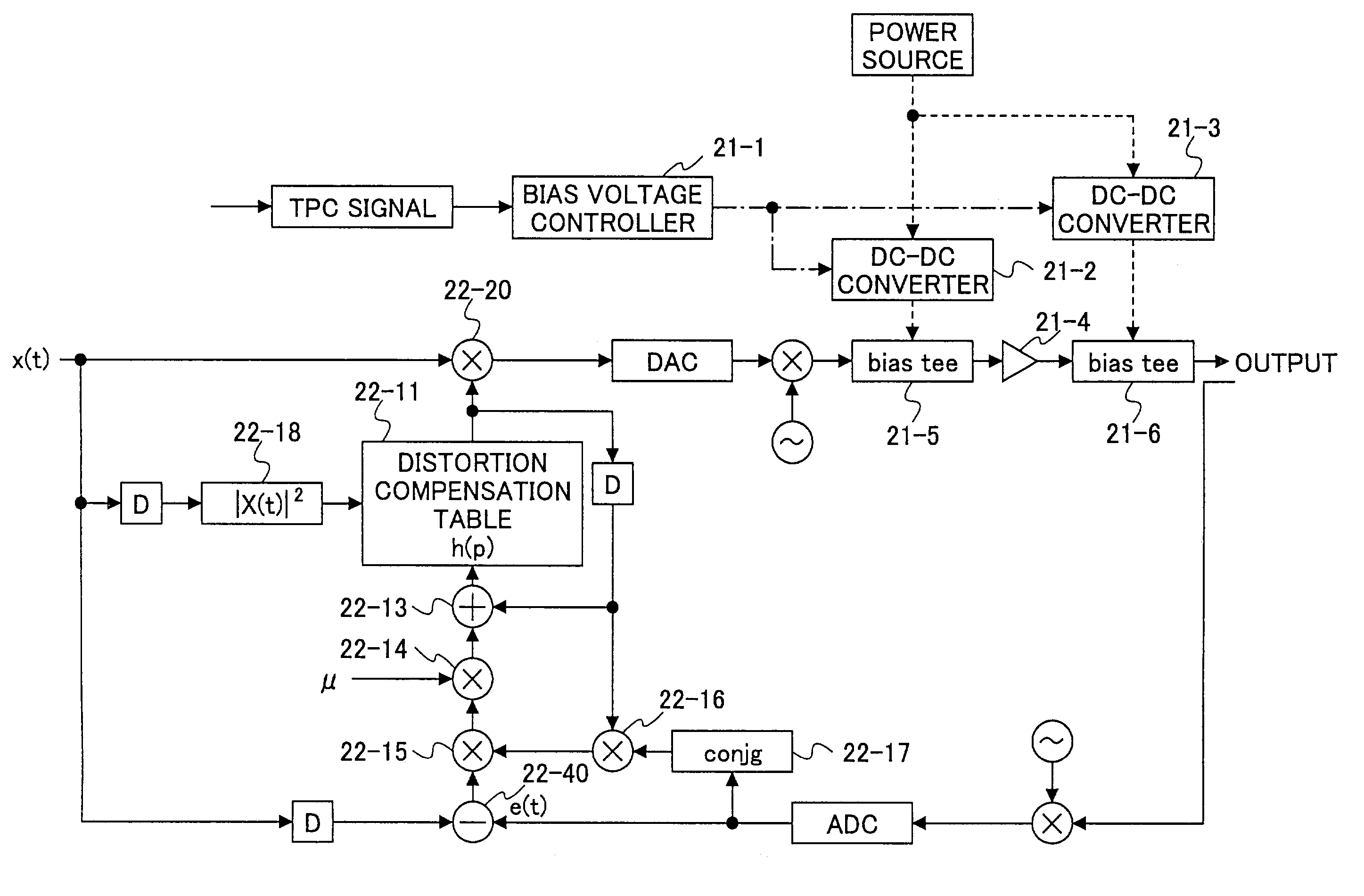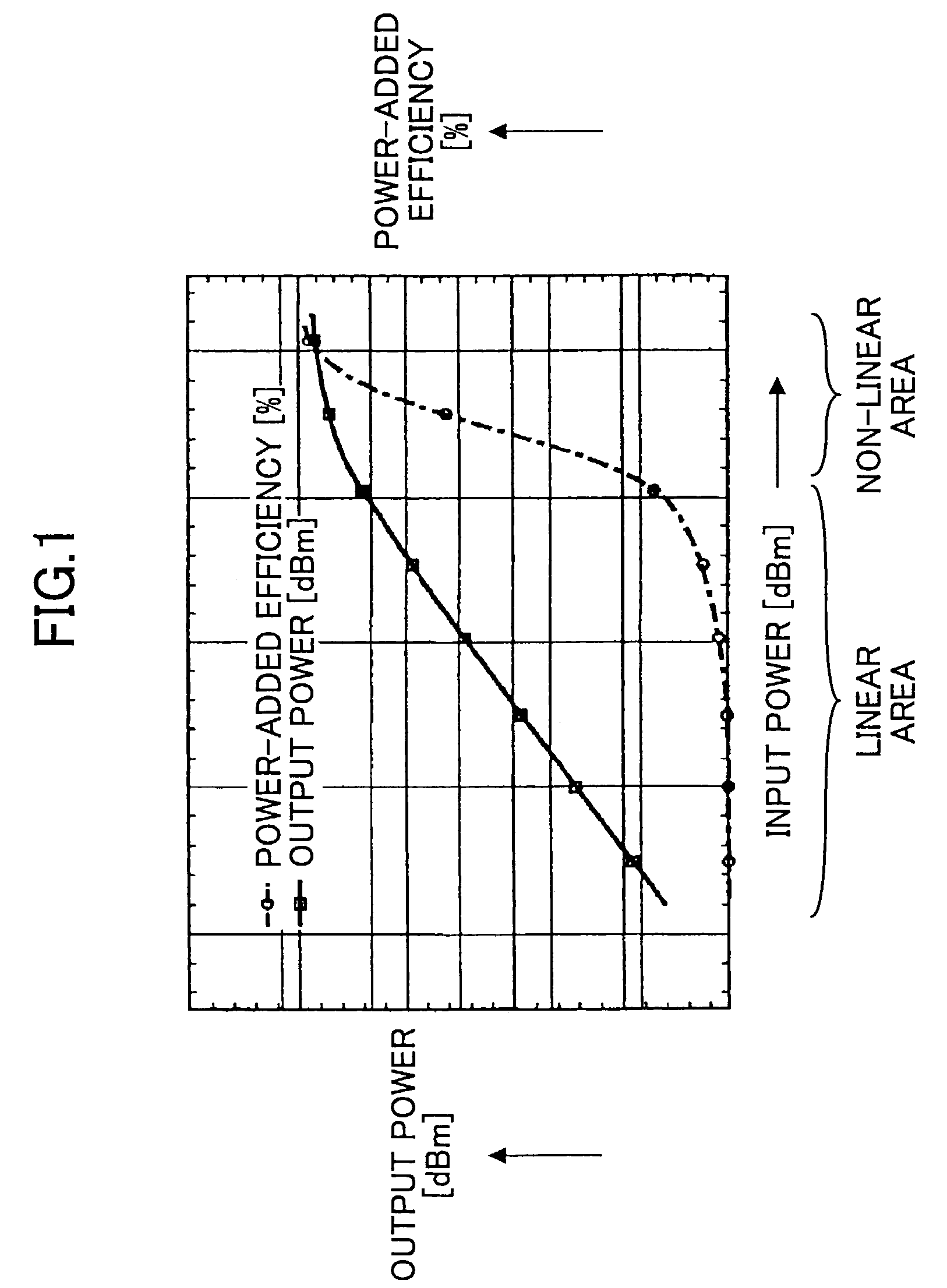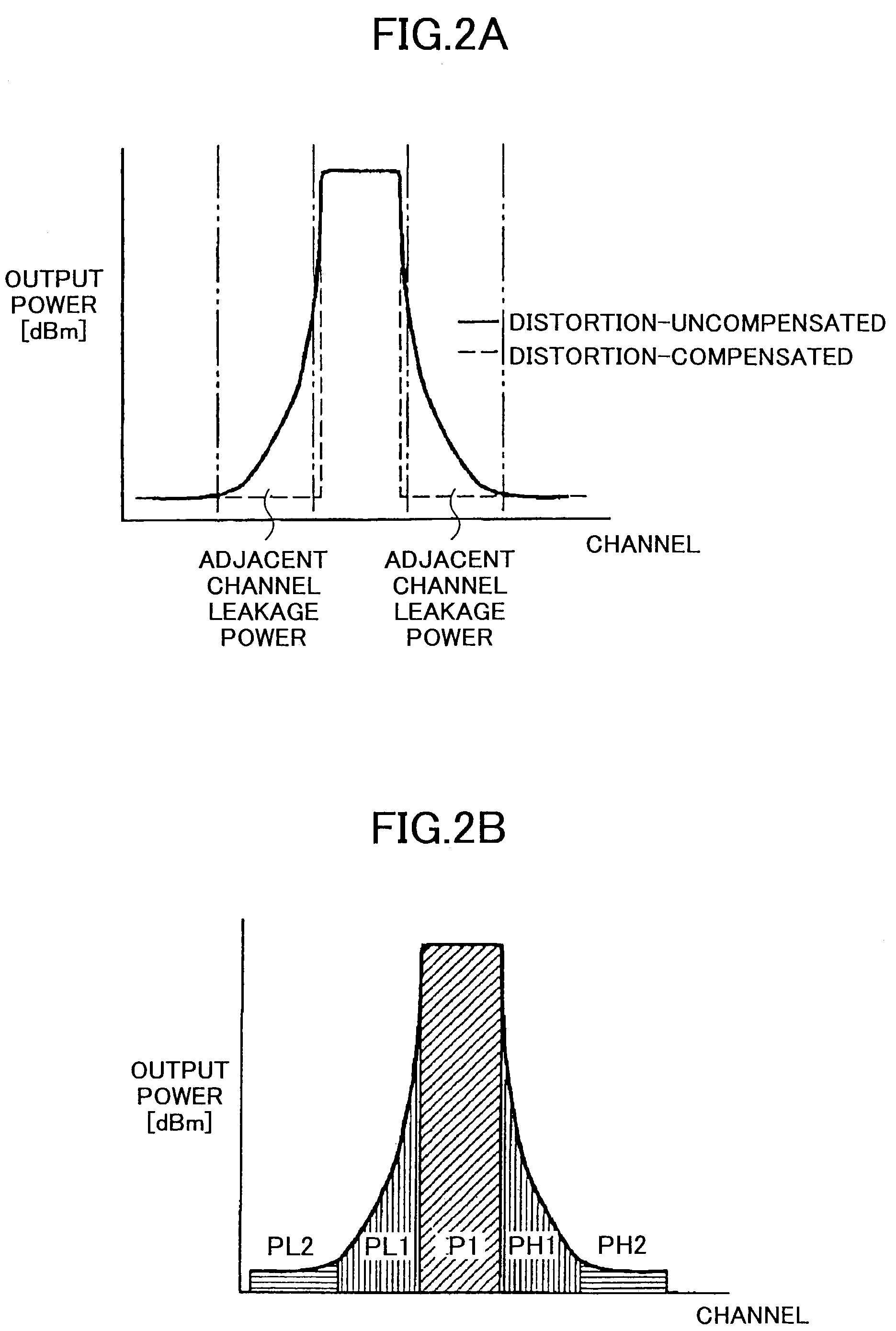Radio with a distortion compensation capability
- Summary
- Abstract
- Description
- Claims
- Application Information
AI Technical Summary
Benefits of technology
Problems solved by technology
Method used
Image
Examples
first embodiment
[0081]FIG. 7 shows the present invention. In this embodiment, transmit power (output power) is calculated at a bias voltage controller 21-1 based on a transmit power control (TPC) signal received from a base station. The most effective bias voltage is determined based on the calculated output power. In this embodiment, although the descriptions are directed to control of the bias voltage, it is also possible to control the power supply voltage supplied for the operation of the HPA.
[0082]Referring to FIG. 4A for the description of this embodiment, the bias voltage, which maximizes the power-added efficiency versus the transmit power, is selected, as shown in FIG. 4A. However, since the selection of the bias voltage where the power-added efficiency becomes the maximum means the use of the non-linear area of the HPA, the level of distortion of the HPA is large. In other words, it causes the degradation of the Adjacent Channel Leakage power Ratio (ACLR). However, the Adjacent Channel Le...
fourth embodiment
[0093]Next, the present invention will be explained with reference to FIG. 11. Although the aforementioned distortion compensation table 22-11 of the linearizer is defined in one dimension in the preceding embodiments, the distortion compensation table 5-1 is defined in two dimensions in this embodiment. In other words, bias voltage is added to the aforementioned distortion compensation table 22-11 as an additional parameter. Specifically, in this embodiment, the two-dimensional table 5-1 stores and retains the distortion compensation coefficients with respect to two parameters, that is to say, the transmit power and the bias voltage. For that reason, it becomes possible to use the distortion compensation coefficient according to the bias voltage of the HPA, whereby accelerating the convergence time taken for the distortion compensation as compared with the cases in the preceding embodiments.
fifth embodiment
[0094]Next, the present invention will be explained with reference to FIG. 12. By the way, if a steep change in the bias voltage occurs during the bias voltage control according to the preceding embodiments, it causes the spectrum of the output signal of the HPA to spread, resulting in an increase of noise, that is to say, an increase of the distortion level.
[0095]In order to suppress the steep change, with the same configuration as in the fourth embodiment shown in FIG. 11, the low-pass filters (LPF) 6-1, 6-2 are provided at the output side of the DC—DC converters 21-2, 21-3, respectively, to cut the high-frequency components, as shown in FIG. 12A. In this way, the change of the bias voltage is smoothed, as shown in FIG. 12B, whereby reducing the distortion level due to the steep change of the bias voltage. Consequently, it becomes possible to avoid the spectrum of the output signal of the HPA from spreading.
PUM
 Login to View More
Login to View More Abstract
Description
Claims
Application Information
 Login to View More
Login to View More - R&D
- Intellectual Property
- Life Sciences
- Materials
- Tech Scout
- Unparalleled Data Quality
- Higher Quality Content
- 60% Fewer Hallucinations
Browse by: Latest US Patents, China's latest patents, Technical Efficacy Thesaurus, Application Domain, Technology Topic, Popular Technical Reports.
© 2025 PatSnap. All rights reserved.Legal|Privacy policy|Modern Slavery Act Transparency Statement|Sitemap|About US| Contact US: help@patsnap.com



